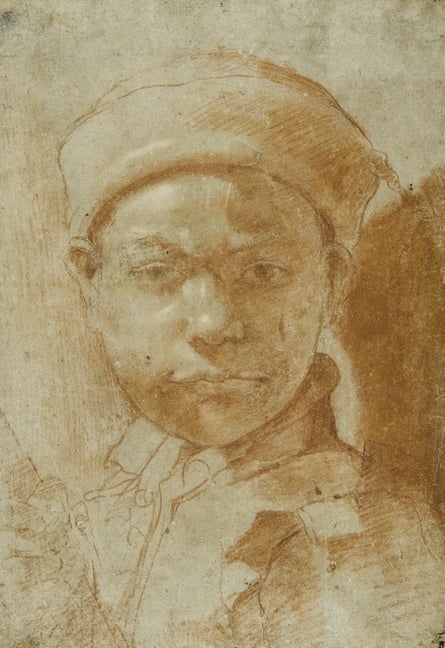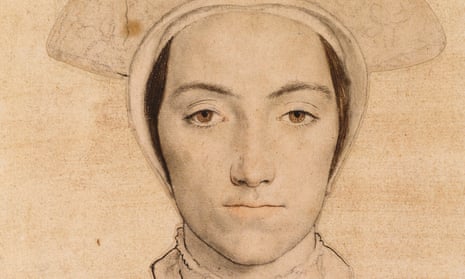The National Portrait Gallery is one of the oddest museums in the world. Its peculiarity is evident in the labels of its sporadically compelling exhibition of Renaissance and Baroque portrait drawings. The name of the sitter – when known – comes first and the artist second. That’s how it is always done at this museum of great British characters. Walk through it, and you encounter many important people but few artistic masterpieces. In fact, there are just two great pictures in the entire permanent collection – Hans Holbein’s life-size drawing of Henry VIII and John Singer Sargent’s 1908 portrait of Conservative prime minister Arthur Balfour, both studies in the sexuality of power.
Recently, all that has been changing. Along with its portrait awards and fashion retrospectives, it keeps putting on exhibitions of actual art. We’ve had Giacometti and Picasso, with an important exhibition of Cézanne coming soon. Meanwhile, here is a tastefully selected survey of Old Master drawings. Holbein is the star. His drawing of an unknown Tudor woman entitled Woman Wearing a White Headdress (c.1532-43) stares at you with a cool disdain and self-possession that is arresting: was this the kind of look with which Anne Boleyn bewitched Henry VIII?

Yet I can’t help being sceptical of the gallery’s reinvention. It will never be one of the world’s great art museums, as it now seems to fashion itself. The Encounter, for all its refinement, shows why. It includes some of the greatest artists in history yet it still manages to be unfocused and slight.
Is it crass to point out that, while subtitled “Drawings from Leonardo to Rembrandt”, it only actually contains one drawing by da Vinci and one by Rembrandt? This can’t be due to any difficulty in securing loans. The curators have had access to the poshest collections in Britain. They have borrowed no less than four works by (or probably by) Annibale Carracci from the Duke of Devonshire. Why not ask for his beguiling Leonardo sketch of Leda and the Swan while they were at it?
It feels both patronising and snobbish to put Leonardo on the poster then minimise him in the show. Doubtless unfairly, I picture the selectors sniffing over their sherry: “I suppose we must have Leonardo to satisfy popular taste.” Then they got on with the really fun business of choosing the most obscure works by the most eccentric selection of 16th- and 17th-century artists.
This is for you if you have been waiting all your life to see sketches by Leendert van der Cooghen or Francesco Salviati. Neither of the portraits included by these minor artists is especially compelling. At least, however, they are not as horribly ugly as two drawings of unprepossessing young men by German Renaissance artist Leonhard Beck. The catalogue praises his sensitivity. Right. Both characters look drunk and the artist himself may have had a few too many beers.
The exhibition’s premise is only partly fulfilled. Holbein’s drawings give a genuine and electrifying sense of encounter between artist and subject. They make 16th-century people uncannily alive. The way John Godsalve looks shyly out of his sketch is unforgettable. Mary Zouch, if her tentative identification is correct, looks off to the right out of a face full of character and energy. You really feel these people are in the room. Yet some artists are less immediate in their drawings than in their finished works.
There are a couple of nice portrait sketches here by the great Baroque artist Gian Lorenzo Bernini, but this miraculous carver of marble could actually make people come alive in stone more effectively than on paper. His marble bust of his lover Costanza Bonarelli in the Bargello museum, Florence is far more spontaneous and sensual than his drawings here. Similarly, the drawings of Domenico Ghirlandaio, Michelangelo’s teacher, possess a stately humanism but lack the incredible reality and pathos of his painting in the Louvre of a boy fascinated by his grandfather’s deformed nose.
Perhaps this tells us something about Renaissance and Baroque art. It can indeed be disarmingly direct and seemingly spontaneous. Yet it is also profoundly disciplined, controlled and designed. Spontaneity, or its appearance, has to be hard won. A drawing does not necessarily convey the life in someone just because it was done from direct observation. The acute realism Holbein achieves is not a simple translation of what was there but a miracle of art. If the curators had been a bit less ready to shove in their strange enthusiasms and a bit more precise in their art history this interesting show could have been a truly profound encounter with how such miracles are achieved.

Comments (…)
Sign in or create your Guardian account to join the discussion